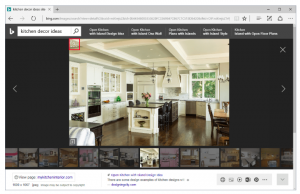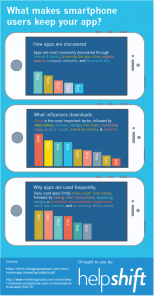You put tons of time into creating your product(s), experimenting with acquisition channels, honing your messaging – and here I am, about to tell you about how consumers are often swayed by such a subtle thing as the order in which you present your products.
It’s a funny thing, human behavior.
Often, small nudges can produce significant changes in how we act. The Serial Position Effect is one such behavioral nudge. It has interesting implications for memory, preference, and behavior – and of course for designing and optimizing your website.
Serial Position Effect and How It Affects Memory
Serial position effect is the tendency of a person to remember the first and last items in a series best and the middle items worst. It’s made of two parts:
Primacy and Recency Explained
Primacy: Things that happen first are typically the most important because they influence what comes next.
The theory behind primacy effect is that there is a relatively small amount of processing effort expended in rehearsing the item by itself. So, basically, when you process the 9th item on a list, you’re also processing the previous 8, where the first one is by itself. This results in greater cognitive fluency and therefore greater recall.
Recency: Things that just happened are relevant because they are the most accurate representation of “now.”
The theory behind recency effect is that items at the end of a sequence are easier remember because of their preservation in our working memory (the part of our short-term memory that processes conscious and immediate perceptual information). Our working memory only holds ephemeral information. It acts as a buffer for new information while it processes it into other, longer-term memory systems.
All that stuff in the middle? That’s likely to be forgotten. Even if people read everything, the stuff in the middle would be the most likely to be forgotten.
The effect Primacy and Recency have on recall is powerful and well studied. It’s not a new concept, at all. Apparently Hermann Ebbinghaus (1850-1909) originally coined the term ‘serial position effect’ after conducting a number of memory studies on himself.
Then this study from 1962, where researchers analyzed free recall of word lists ranging from 10 to 40 words, supported the effect. Here’s a chart of the results:

As you can see, the last words on the list are much more likely to be recalled. Similarly, as the lists get longer, it becomes increasingly unlikely that subjects remember the middle words (as well as the first words).
List Order Matters – What’s Optimal?
One other finding with the Serial Position Effect is that, if there is a “distracter task” between the information study phase (the list presentation) and test phase (when respondents are asked to recall), Recency Effect will fade in power.
However, in the study, Primacy Effect was still present after a 30-second interference task. From the study, researchers concluded that the capacity of human short term memory is likely to be three to four chunks of information at one time.

Be aware of the Serial Position Effect when presenting visitors with a list – of any kind (a set of links, sales pitch, a feature list, client list, navigation, etc.)
Baymard gives some advice regarding lists on your website, all good ideas to consider:
- Put the least important items in the middle of the list, and the most important first or last. As a commenter on the Baymard article said, “I use this effect to add at the end of the list (so bottom of the list) the main attractive item (ex. North European who prefer the South of France) because I know that the users will go to the last item and I know that they will read the first too.”
- If the prospect makes a decision greater than 30 seconds after exposure, place the most important item first. If the decision is made right away, place the most important item last on the list (this has to do with the time of exposure part of the Serial Position Effect). The example they gave: On a sales page, try putting the main benefit first on the list, and list persuasive extras like “free shipping” and “works with iPod”, last. This way if the subject leaves the page they are more likely to remember the main benefit of your product.
- When the user doesn’t set the pace of the presented items, such as in video and audio, present the most important items last (and first, might I add – especially as they’re probably not going to make it all the way through the media).
Primacy and Anchoring Effects
We’ve talked, in previous articles, about the power of defaults. Users don’t like to exert any extra effort, so they tend to go with the option with the least friction. Often, this is the option that is most prominent or memorable. Serial Position Effect can aid in this process, especially in regards to pricing.
We published an Academic Insight that looked at two ways of presenting product information:
- Product primacy
- Pricing primacy
Product primacy is when the subject sees the product first, and then later the price; pricing primacy is opposite – price first (say you walk up to a rack of $ 40 shirts at a department store then see the shirts). The researchers found:
- When consumers see a price before the product, they evaluate the product’s worth more critically.
- When they see the product first, they evaluate the product solely on that criteria.
Essentially, what the consumer sees first sets an anchor by which they judge the entire experience. How can you use this to your advantage? Perhaps with SaaS pricing pages, you can set the highest price first, like Crazy Egg does:

Or, similarly, you could test the order of your products on a category page:

You might notice this price anchoring when at a nice restaurant. Restaurant consultants often suggest adding a super expensive wine or menu item and featuring it prominently, so everything else looks reasonable in comparison.
Know, however, that prototypicality is the balancing force here. Users are used to seeing increasing pricing order (lowest first). And if they’re comparison shopping (they are), seeing the highest price first could be a source of friction.
There are always examples that contradict the best practices, so what works for someone else may not work for you. It’s always contextual, right?
Studies have shown people most often choose the first bubble gum in a sequence, but if you’re selling real estate, it seems to be most effective to show the consumer the most applicable property last.

Point is, order can make a big difference and it’s not a difficult test to set up.
Order Affects Your Preference
Another interesting characteristic of order is that it actually influences consumer preference. A study published in 2007 explained these effects clearly.
The researchers studied “recommender systems” – systems that help consumers choose which product to buy.
Subjects were shown randomized variations of tent order. All the tents had different features – waterproofing, closures, etc. – yet consumers chose the first tent over the rest by a factor of 2.5X, no matter what the first tent was.

If you’ve ever sent out an email newsletter, you know the order matters. People click more on the first (and last) links.
With ours, for example, we feature content from the blog that was published the last week. We consistently find the most traffic going to the first one we post. Therefore, we try to feature a post that has already shown signs of organic traction to give it a boost:

Other newsletters, like Instapaper, organize by popularity as well:

According to Roger Dooley, this effect has some clear implications for website design:
 Roger Dooley:
Roger Dooley:
“Well, for one, you could put the product you’d most like to sell in front of the others. Perhaps it’s your most profitable product, or the one in which you hold the most inventory.
From a more customer-oriented standpoint, I’d recommend putting your most attractive product up front – the one which offers the best combination of value and performance, for example. This should maximize the chance of an order actually being placed, and should also be the most likely to create a good customer experience (and repeat orders).”
Often, the newest products are given precedence, which makes sense because you want to get a lot of eyes on new products for market validation. But when designing product pages, try testing different default orders. Try emphasizing the most attractive products. An example? Chubbies places its two most popular products first (and a new product third):

People are simply more likely to click on the first few links in a series, so optimize with that in mind.
Remember this when you’re designing menus, too. We’ve consistently seen that with menus with too many options (paradox of choice), the middle ones get ignored. So either limit your options or place the important ones at the top or bottom.

Bottom Line: What Does This Mean For Marketing/Optimization?
As far as conversion optimization goes, there are two strong implications of the Serial Position Effects with landing pages in particular:
- Start strong. Make sure your value proposition is well-articulated and above the fold (primacy).
- End strong. Repeat the call to action throughout and at the bottom of the page (recency).
In addition, there are a few applications to pricing and other aspects of websites.
Start Strong: Optimizing First Impressions
You know the importance of your value proposition. As Peep once wrote, “value proposition is the #1 thing that determines whether people will bother reading more about your product or hit the back button.”
It should set a strong first impression and anchor the experience for your web visitors. If done well, it should be remembered after browsing your site (and hopefully even if they leave).
A good example – a shining example of clarity, really – is from Stripe:

On the same note, what if you’re writing a long form sales page? Don’t bury the lede. If you want something to stand out in your copy, use it at the beginning. Repeat the message several times, as well.
Our agency site starts strong:

And the body copy begins with that message as well:

Hard to forget what we do.
End Strong: Emphasizing the Core Message
The recency effect tells us that our brains also remember things better if they occur at the end of a sequence. Therefore, in sales copy, you should also repeat your most important message towards the end to reiterate what you want to stand out.
Recency also suggests the importance of the last customer touch point. I was so thrilled when Chubbies sent me a well-designed and funny packaging with some free gifts and a letter. This is how promoters are made.

Conversion Research Implications and Mitigating Bias
A large part of conversion optimization is figuring out what to test, and we usually do that through a variety of research methods – user testing, usability testing, surveys, etc.
Anything that requires users to respond to a questionnaire more than a few questions long may suffer from bias due to Serial Position Effect.
As Jeff Sauro, founder of MeasuringU, wrote:
 Jeff Sauro:
Jeff Sauro:
“In usability testing, this [Serial Position Effect] is most commonly seen with tasks and product order.
Users typically perform worse on their initial tasks (as they get accustomed to the testing situation and being observed). When testing multiple interfaces or products, the most recently used product may have more salience in the user’s mind when they are asked to select their preference.
The best way to minimize primacy and recency effects is to alternate the presentation order of the tasks and products.”
It’s similar with customer surveys. As users begin to “learn” a survey, they tend to lead with answers that they believe will reach a desired outcome. Essentially, they’re trying to guess at the goal of the survey and they answer accordingly.
A similar bias to be aware of while designing longer surveys is the bias of central tendency. Fatigued, respondents begin to default to the mean score on any kind of Likert or Semantic Differential-type scale.
To mitigate the effects of both Serial Position Effect and Error of Central Tendency, the answer is simple: just mix up the questions for each respondent. Most survey tools have this capability.
Conclusion
Primacy and Recency Effects are quite strong influencers of human behavior. Thing is, they are not clear-cut, and there’s no silver bullet way to utilize them. The basic premise stands though:
We remember (and usually prefer things) that are presented first, as well as most recently. Things in the middle tend to be forgotten or lost in the noise.
Therefore, place things that deserve emphasis (links, articles, products, pricing plans) first or last to emphasize them on your site. Don’t assume that this will give you a lift, of course – test it for yourself. But know that our memories favor the first and last items in a sequence, and optimize with that knowledge in mind.
Digital & Social Articles on Business 2 Community
(145)






